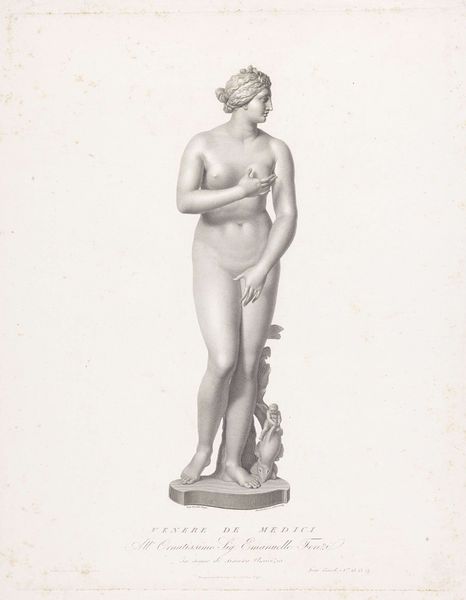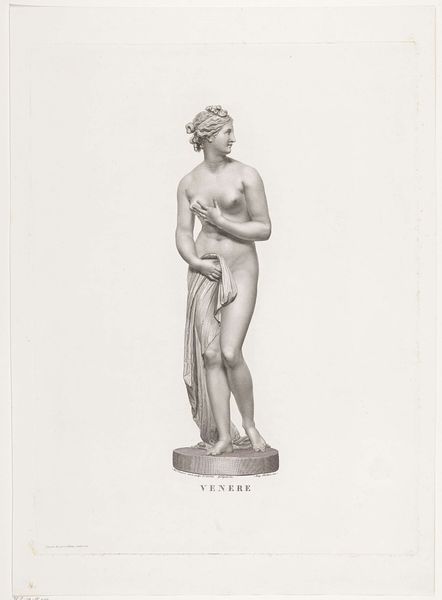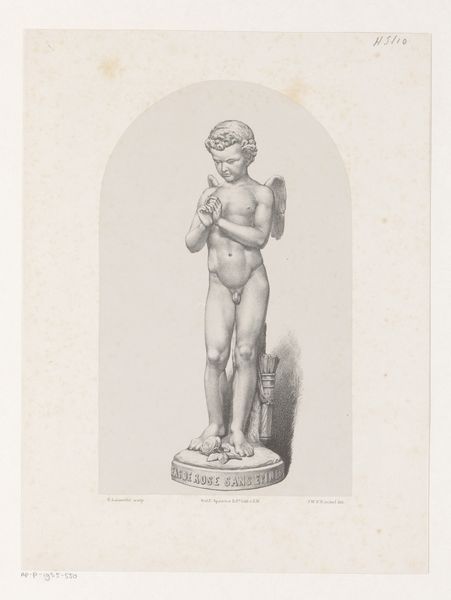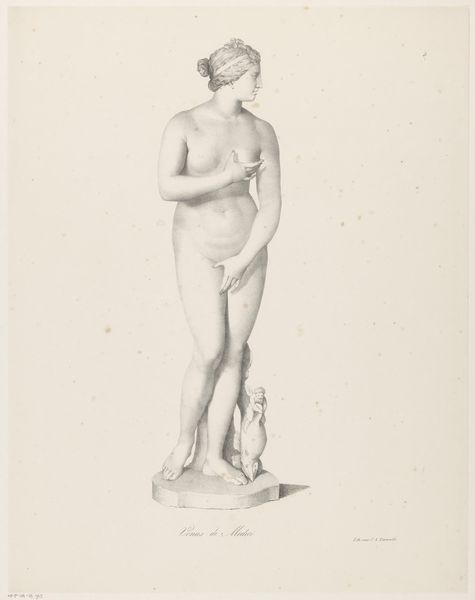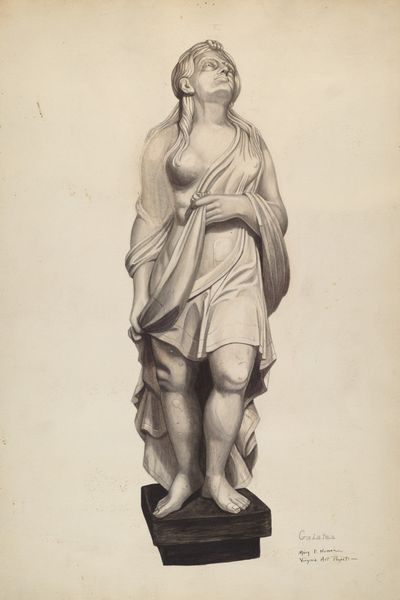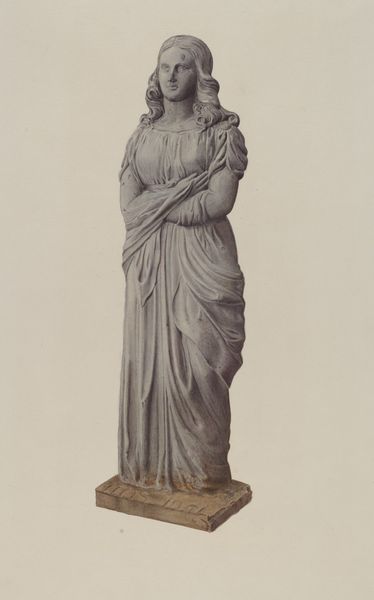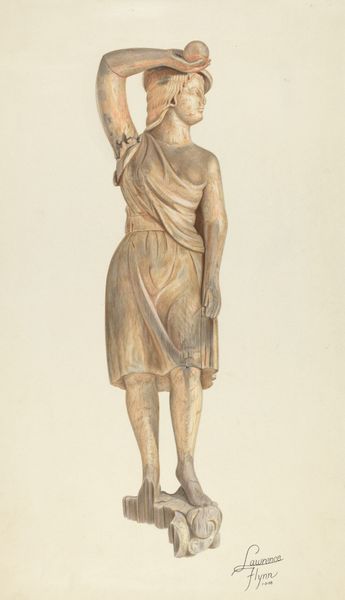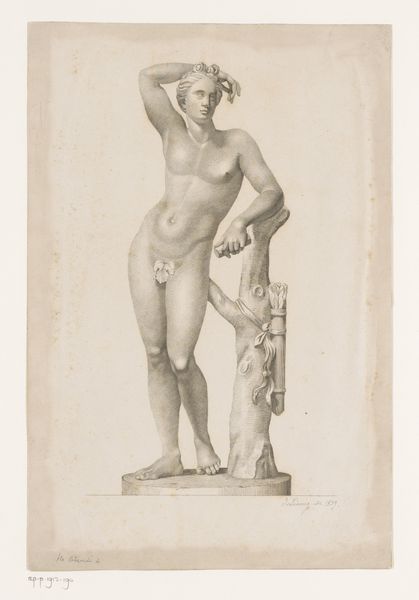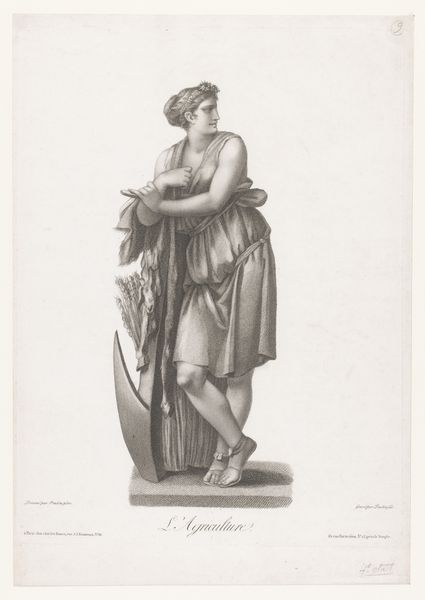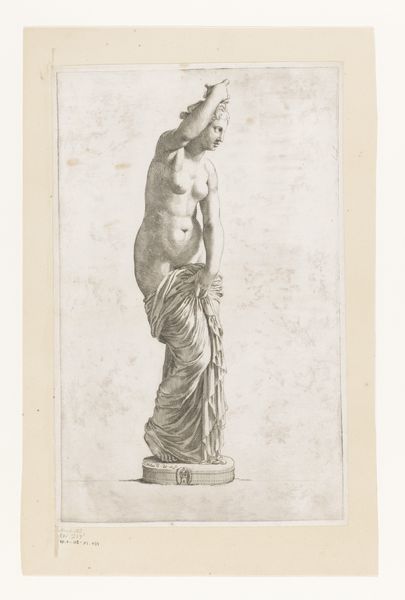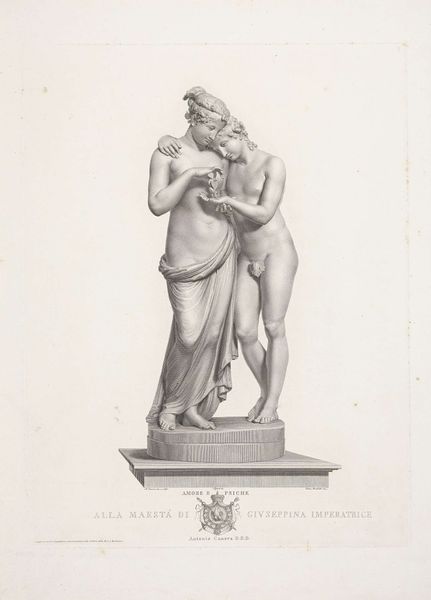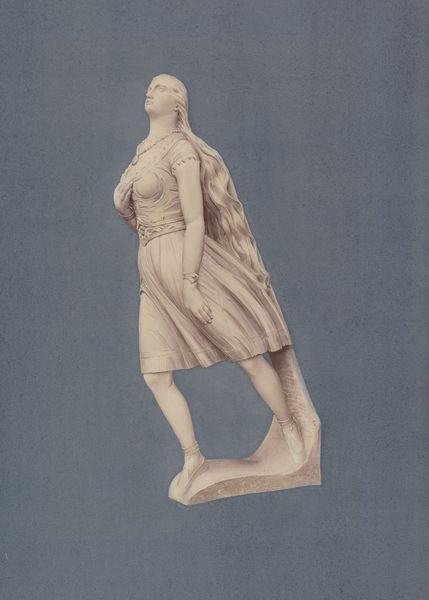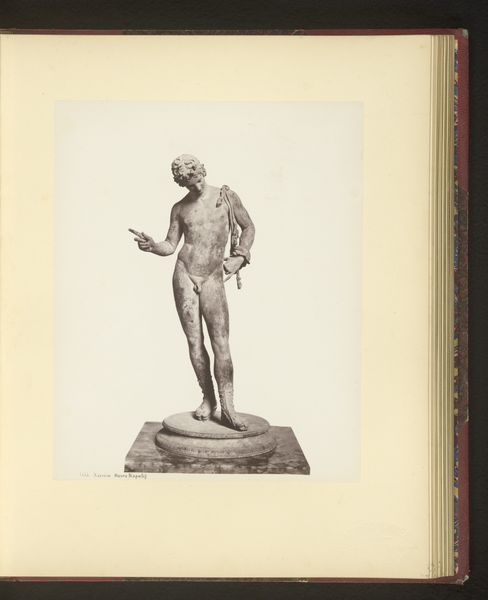
Venus, frontal view, from "Oeuvre de Canova: Recueil de Statues..." 1817
0:00
0:00
drawing, print, sculpture, graphite
#
drawing
#
neoclacissism
# print
#
classical-realism
#
figuration
#
classicism
#
sculpture
#
graphite
#
academic-art
#
nude
#
graphite
Dimensions: Sheet: 28 3/8 × 21 1/16 in. (72 × 53.5 cm) Plate: 21 1/4 × 15 15/16 in. (54 × 40.5 cm)
Copyright: Public Domain
Editor: This print, "Venus, frontal view," made in 1817 by Domenico Marchetti, captures the cool, classical lines of a sculpture. The shading gives the figure such incredible volume. It almost feels like a photograph of a sculpture. How do you see this work within the artistic trends of the time? Curator: It's interesting that you call it "cool." It speaks to the prevailing social and political climate. The print captures a Neoclassical aesthetic that was very much in vogue in the late 18th and early 19th centuries. Consider how Napoleon embraced classical imagery to legitimize his power. Did this artistic style merely reflect a return to ancient aesthetics, or did it serve a larger ideological purpose? Editor: I guess it wasn’t just about pretty pictures then! It’s like these images were saying something about power and control. It does seem that the elite of the time where using the style to legitimize their own authority. The woman depicted does not reflect beauty standards, she looks nothing like an ordinary woman of that time. Is that a class signifier? Curator: Absolutely. This idealised representation reinforces existing power structures. These images functioned within the context of elite patronage. Think about how the distribution of such images – in print form like this one, making it more accessible than the sculpture itself - could shape public perceptions and reinforce the authority of those who commissioned and consumed them. How does knowing this affect your reading of the work now? Editor: I guess I thought of it as beautiful, but also distanced and unattainable. Now I can see the sculpture and print are more than just depictions of beauty; they're actively participating in a conversation about power. I will definitely look into the power dynamic of that period. Thanks! Curator: Precisely. Art, especially publicly accessible art, rarely exists in a vacuum. It's always embedded within a web of social, cultural, and political forces, isn't it? It is about visual culture and the influence on its publics.
Comments
No comments
Be the first to comment and join the conversation on the ultimate creative platform.
